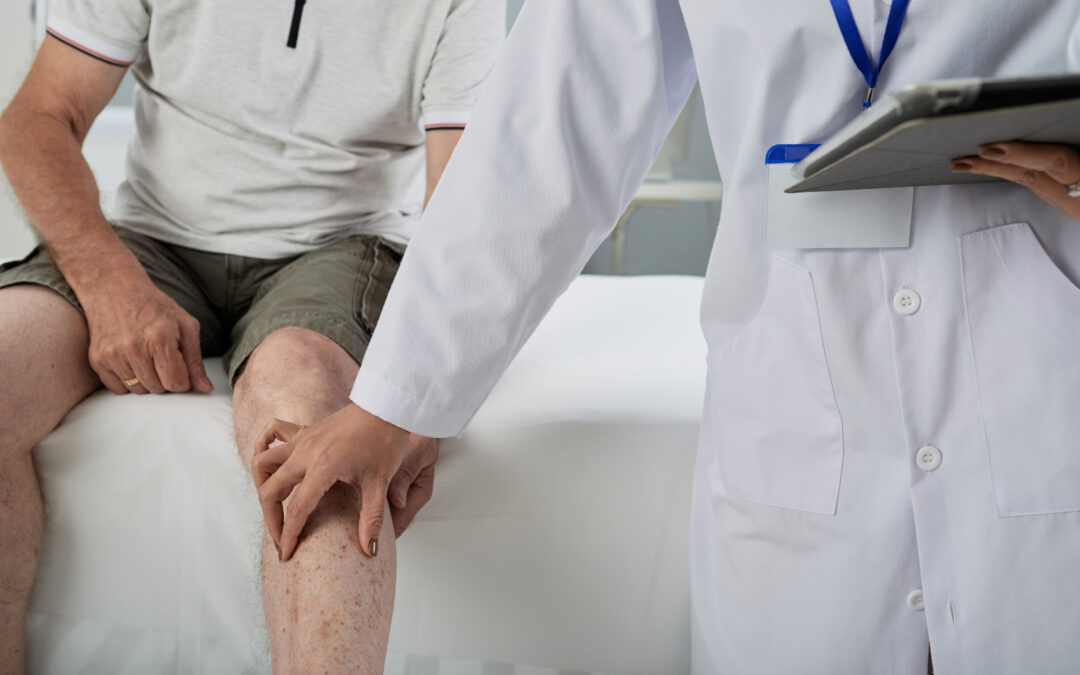Knee osteoarthritis is a common and debilitating condition that affects millions of people worldwide. It can cause pain, stiffness, and reduced mobility, significantly impacting the quality of life. While there are various treatment options available, Platelet-Rich Plasma (PRP) therapy has emerged as a promising approach to manage knee osteoarthritis. In this blog, we will explore what PRP therapy is and how it can be used to tackle knee osteoarthritis effectively.
Understanding Knee Osteoarthritis
Before delving into the benefits of PRP therapy, it’s essential to understand knee osteoarthritis. Osteoarthritis is a degenerative joint disease characterized by the breakdown of cartilage in the knee
joint. Cartilage acts as a cushion between the bones, and its deterioration can lead to pain, inflammation, and joint dysfunction.
Traditional treatments for knee osteoarthritis include pain medication, physical therapy, corticosteroid
injections, and in severe cases, surgical interventions like knee replacement. However, these treatments
may not always provide long-lasting relief or address the underlying issue of cartilage damage.
What is PRP Therapy?
PRP therapy is a minimally invasive procedure that utilizes the body’s natural healing properties to treat various musculoskeletal conditions, including knee osteoarthritis. The process involves drawing a small amount of the patient’s blood and then centrifuging it to separate the platelets and growth factors from the other components. The resulting platelet-rich plasma is then injected directly into the affected joint.
How PRP Therapy Works for Knee Osteoarthritis
PRP therapy offers several mechanisms through which it can effectively tackle knee osteoarthritis:
Anti-Inflammatory Effects: PRP contains growth factors and cytokines that help reduce inflammation in the knee joint. Inflammation is a major contributor to pain and cartilage degradation in osteoarthritis.
Cartilage Regeneration:ô PRP stimulates the production of chondrocytes, the cells responsible for maintaining and repairing cartilage. This can promote the regeneration of damaged cartilage, potentially slowing down the progression of the disease.
Pain Reduction: By addressing the underlying causes of knee osteoarthritis, PRP therapy can provide significant pain relief, improving the patient’s overall quality of life.
Minimal Side Effects: PRP therapy is a minimally invasive procedure with few side effects, making it a safer and more appealing option for many patients compared to more invasive treatments.
The PRP Therapy Process
Consultation: Before undergoing PRP therapy, patients should consult with a qualified healthcare provider to determine if they are suitable candidates for the treatment.
Blood Collection:ô A small amount of the patient’s blood is drawn, typically from their arm.
Centrifugation: The blood is then placed in a centrifuge machine to separate the platelet-rich plasma from the rest of the blood components.
Injection: The concentrated PRP is carefully injected into the knee joint, guided by ultrasound or fluoroscopy to ensure precision.
Recovery: Patients may experience some discomfort and swelling at the injection site, but these symptoms typically subside within a few days. Physical therapy and activity modification may be recommended during the recovery period.
The Effectiveness of PRP Therapy
Numerous clinical studies and patient testimonials support the effectiveness of PRP therapy in managing knee osteoarthritis. Many patients report reduced pain, improved joint function, and an enhanced overall quality of life after undergoing PRP treatment. However, it’s essential to note that individual results can vary, and PRP therapy may not be a suitable option for everyone.
Conclusion
Knee osteoarthritis can be a challenging condition to manage, but Platelet-Rich Plasma (PRP) therapy offers a promising approach to tackle the disease’s symptoms and potentially slow down its progression. By harnessing the body’s natural healing properties, PRP therapy can reduce inflammation, promote cartilage regeneration, and provide meaningful pain relief. If you or a loved one is struggling with knee osteoarthritis, consult with a qualified healthcare provider to explore the possibility of PRP therapy. While it may not be a miracle cure, PRP therapy has the potential to improve your quality of life and help you regain mobility and comfort in your daily activities. Remember, every individual’s condition is unique, and the best treatment plan should be tailored to your specific needs and circumstances.


